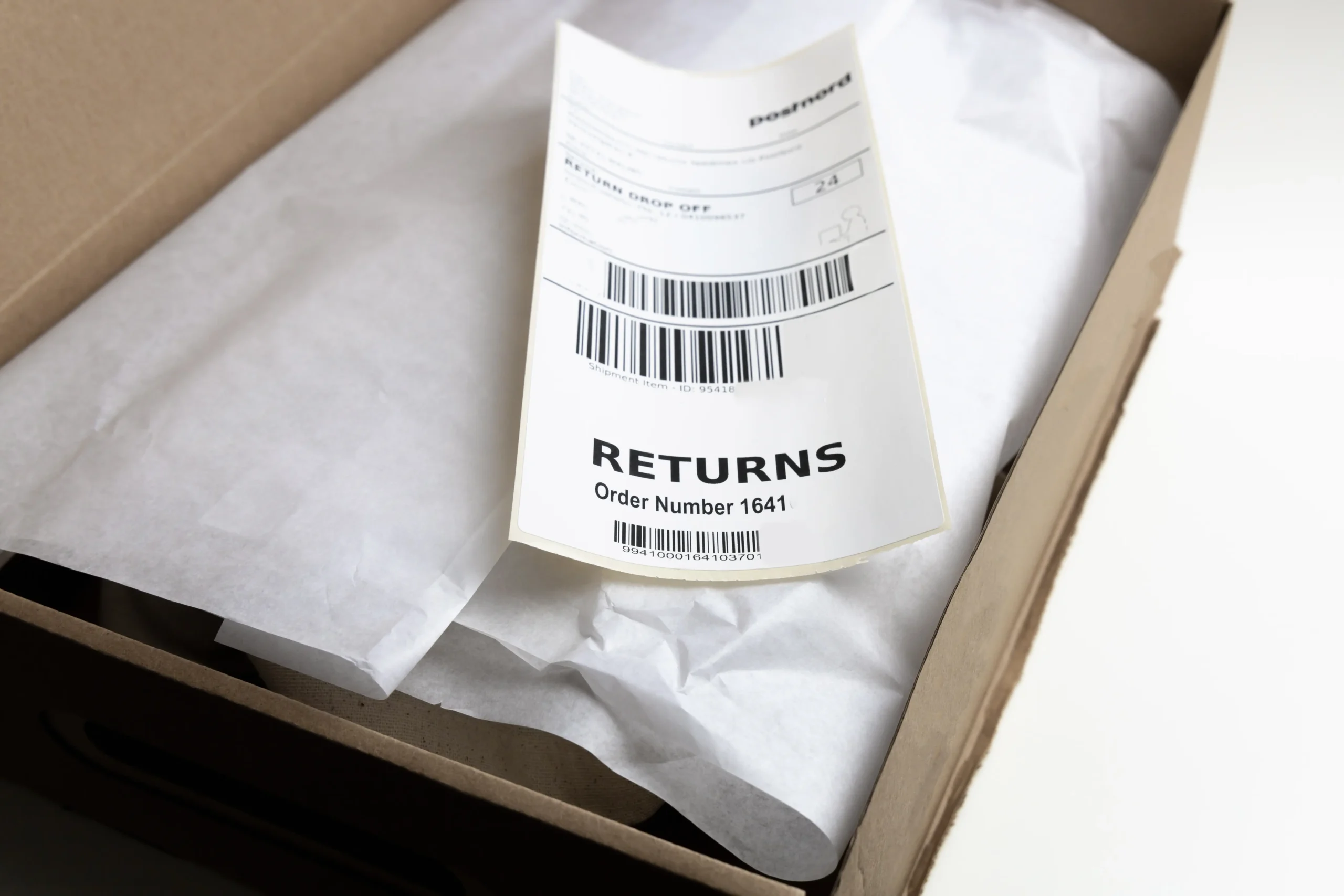What is the definition of parcel?
59 million parcels are shipped daily in the United States alone, with numerous carrier services handling a wide range of parcel sizes from small 100g parcels to massive 45,000 lbs shipments.
Parcel shipping is the most popular and affordable shipping option for lightweight or small-sized items. It means shipping items that typically weigh less than 70 pounds and can be transported, handled, and delivered without assistance.
Here are the small parcel size guidelines specified by major shipping companies:
| Maximum Size Guideline | Maximum Weight Guideline | |
| FedEx | Individual packages can be up to 108 inches in length, and 165 inches in combined length and girth. | Individual packages can weigh up to 150 lbs. |
| UPS | Individual packages can be up to 108 inches in length, and 165 inches in combined length and girth. | Individual packages can weigh up to 150 lbs. |
| USPS | Individual packages can be up to 108 inches in combined length and girth. | Individual packages can weigh up to 70 lbs. |
In this article, we’ll review the parcel shipping process and highlight the benefits of small parcel shipping over freight shipping.
Do you sense a lack of data transparency in your small parcel shipments? Gain full visibility into your supply chain’s important data points with Sifted Logistics Intelligence.
How does parcel shipping work?
Before you ship a parcel, you need to take care of several things, such as:
- Carefully packaging the contents to protect them from damage during handling, transport, and storage.
- Properly labeling your parcel to include both the sender’s and recipient’s name and address.
- Picking a parcel delivery service that meets your needs. For example, FedEx Express delivers packages by a specific time, while FedEx Ground delivers packages by a certain date.
- Booking a pickup with your carrier service or taking your parcel to the carrier’s drop-off location or post office.
Once you’ve got your package ready and booked your carrier, here are the steps involved in how the package is delivered to the recipient’s doorsteps:
- Parcel collection: Your carrier service collects the parcel from a specific address or from the designated pickup location. Once the package is picked up, you should receive a pickup confirmation email and tracking details.
- Arrival at carrier location: Next, the carrier transports your package (along with hundreds of other parcels) to a local depot, where they are loaded onto conveyor belts. Most fulfillment centers use auto-sorting technology to group packages with the same postcode, ready for them to be delivered to an address.
- Journey to the distribution center: Once all the packages are sorted, they are loaded onto trucks and are typically transported to a distribution hub near the final destination. Here, the parcels are again sorted and grouped depending on address proximity and assigned to a delivery driver for final delivery.
- Out for delivery: The delivery driver collects your parcel from the destination hub and delivers it to the intended recipient. In case of a failed delivery attempt, either due to an incorrect address or the recipient’s absence, the carrier will try to deliver your parcel the next working day.
- Tracking your parcel: Most carriers provide an online parcel tracking service that allows you to track where your package is located from pickup to delivery. Once your parcel is delivered, you should receive a notification confirming the delivery.
What is the difference between parcel and freight shipping?
Let’s look at the key differences between parcel and freight shipping:
- Weight limitations: Parcel shipping involves smaller, lightweight packages. Typically, most parcel carriers consider a shipment as a parcel if it weighs under 70 pounds. However, some carriers consider a parcel to be anything up to 150 pounds.
Unlike parcels, freight shipping is the transportation of large shipments of goods by trucks, ships, trains, and planes. Generally speaking, freight shipments weigh between 10,000 to 45,000 pounds. Shipments weighing below 10,000 pounds are called less than truckload (LTL) shipments.
- Retail vs. commercial shipping: Parcel shipping is mainly used by residential and small or medium-sized retailers to transport small packages to spread out recipients quickly or manufacturers shipping specific parts to specific locations. In contrast, freight services are often used by scaled merchants to ship large volumes of goods or heavy items cost-effectively.
- Delivery times: Every step of the delivery process is crucial, whether with parcel shipping or freight shipping. There is more pressure for on-time delivery with parcel shipping. However, while freight carriers are still concerned about timely delivery, they can be more susceptible to delays due to external factors.
- Levels of service: Shipping services like FedEx, UPS, and USPS have different service levels based on the speed and transportation method. In contrast, service levels when shipping freight refers to the duration of transportation time.
- Price structure: Many things affect the cost of a parcel shipment, including the shape, weight, size, type of service, and whether dimensional weight pricing is used. Freight shipments’ costs are determined by the distance traveled, weight, fuel cost, additional services, and the classification of the shipment.
Even though parcel and freight shipping may seem very dissimilar based on weight limitations, transportation methods, and pricing, there are some gray areas often ignored by shippers. For example, if you consistently ship a large volumes of packages to a single destination using parcel shipping, you might be able to lower your shipping costs by consolidating packages into LTL shipments (as opposed to full truckload shipments).
Key Benefits of Parcel Shipping in Comparison to Freight Shipping
1. Easier tracking capabilities
Parcel shipments move through many checkpoints before reaching their final destination, so small parcels are at a greater risk of delays and damage. Regular shipping alerts allow you to proactively inform your customers where their parcels are throughout the shipping process, providing great customer service and keeping customers satisfied with your services.
Freight shipments don’t go through as many checkpoints as parcels. As a result, the shipment updates are not as frequent as well. When considering external factors like weather disruptions and port delays, freight shippers cannot accurately estimate when their shipments will arrive.
2. Cheaper than freight shipping
Parcel shippers can choose from different pricing structures depending on the service level requested. For example, standard ground transit times cost less than expedited delivery options. Similarly, you can accurately determine the cost of your shipment based on the dimensional weight of your package or by opting for flat rate shipping. In addition, carrier services offer discounted deals for long-term contracts or repeated services.
Freight pricing can be complicated as it depends on several variables, including shipment weight, distance traveled, liability coverage, freight class, and fuel cost. Moreover, freight rates are volatile as they are greatly affected by market supply and demand.
3. The environmental impact is being reduced
The shipping industry is the backbone of the global economy, transporting hundreds of millions of shipments each year. According to S&P Global Platts Analytics, the shipping industry accounts for 2%-3% of global CO2 emissions. However, this number is expected to increase to 17% by 2050.
Parcel shipping companies like UPS offer carbon-neutral shipments by calculating the CO2 emissions for a particular package and offsetting it by investing in global environmental projects.
Similarly, carriers are optimizing their delivery routes and optimizing truck space to reduce traveled miles, thus decreasing the environmental impact of shipping.
Here’s is an estimate made by Time for Change for CO2 emitted by different modes of transportation:
- A modern ship releases around 10 to 40g of CO2 to transport 1 ton of freight.
- A train releases 30 to 100g of CO2 to transport 1 ton of freight.
- A truck releases 60 to 150g of CO2 to transport 1 ton of freight.
The environmental impact of parcel shipping is actively reducing, though it isn’t necessarily less than freight shipping.
Parcel Shipping FAQs
Let’s go over some commonly asked questions about parcel shipping.
1. What is small parcel shipping?
Small parcel shipping involves packages that weigh less than 70 pounds. They are more affordable and easier to transport than large parcels. Small parcel delivery is convenient as you can schedule pickups or deliver your package to a nearby drop-off location and track the shipment all the way to the recipient’s doorsteps.
2. What is the size of a small parcel?
Parcel services have different sizes that they consider to be small parcels.
For FedEx, a small parcel can be up to 108 inches in length, 165 inches in combined length and girth, and weigh up to 150 lbs.
For UPS, a small parcel can be up to 108 inches in length, 165 inches in combined length and girth, and weigh up to 150 lbs.
For FedEx, a small parcel can be up to 165 inches in combined length and girth and weigh up to 70 lbs.
3. What is the price of shipping small parcels when under contract?
Everything on a small parcel shipping contract is negotiable. When under contract, you can access competitive tiered shipping rates. Shippers often get discount tiers based on order volume and revenue. You can also negotiate lower surcharges or eliminate them altogether. Similarly, your carrier might offer flat rate shipping rates instead of DIM weight pricing.
Track Relevant Parcel Shipping Metrics with Sifted
Parcel shipping offers a cost-effective and speedy option for shippers to deliver lightweight packages to their customers. To ensure the success of your parcel delivery operations, however, you need the right tracking capabilities.
At Sifted, we offer a wide range of tools for eCommerce businesses and shippers alike to keep track of their important shipping KPIs to improve delivery performance for logistics providers.
Track and visualize your shipping metrics in one central place. Get a free demo from Sifted!











